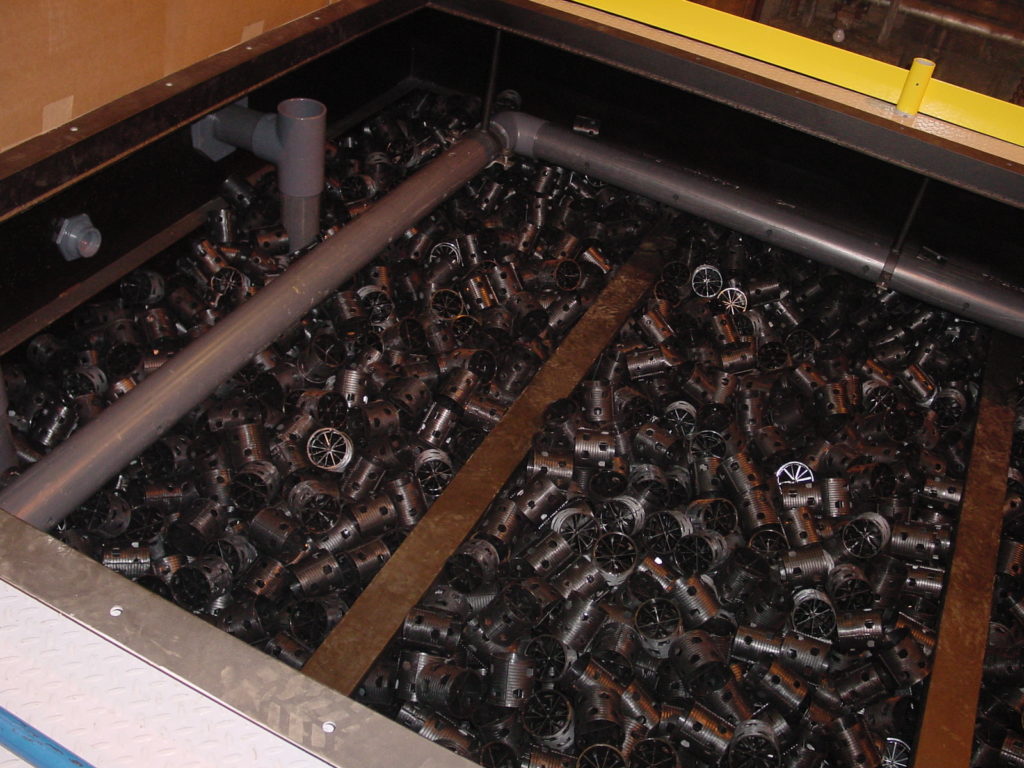Moving Bed Bioreactor (MBBR)
Moving bed bioreactors, or MBBRs, are often an efficient solution for treating wastewater contaminated with medium to high levels of organic contaminants (measured by biological oxygen demand, or BOD).
MBBRs typically consist of aeration tanks filled with polyethylene biofilm carriers followed by a secondary clarifier. The plastic biofilm carriers are half-inch-diameter cylinders or cubes, which are designed to maximize surface area. Biological floc is used to break down organic contaminants in the water. In an MBBR, this floc populates the surface of the plastic carriers and forms a biofilm. The carriers provide a higher density floc population, allowing higher BOD waters to be treated in a smaller area with less energy.
After excess sludge settles, it can be removed by vacuum truck service or dewatered on site with a filter press to be disposed as a solid waste.
MBBRs are often used to remove the bulk of BOD upstream of other biological treatment processes or used in situations where effluent quality is less important. They are used for treating wastewaters produced in food and beverage facilities, meat processing and packing plants, petrochemical facilities, and refineries.
Advantages:
-
-
- Smaller footprint and lower energy use than conventional activated sludge process.
- Can handle medium-to-high loads of BOD efficiently
- Lower sludge removal
-
Disadvantages:
-
-
- Lower quality effluent
-
Our biological solutions can help you minimize operational costs while improving your production capacity.

